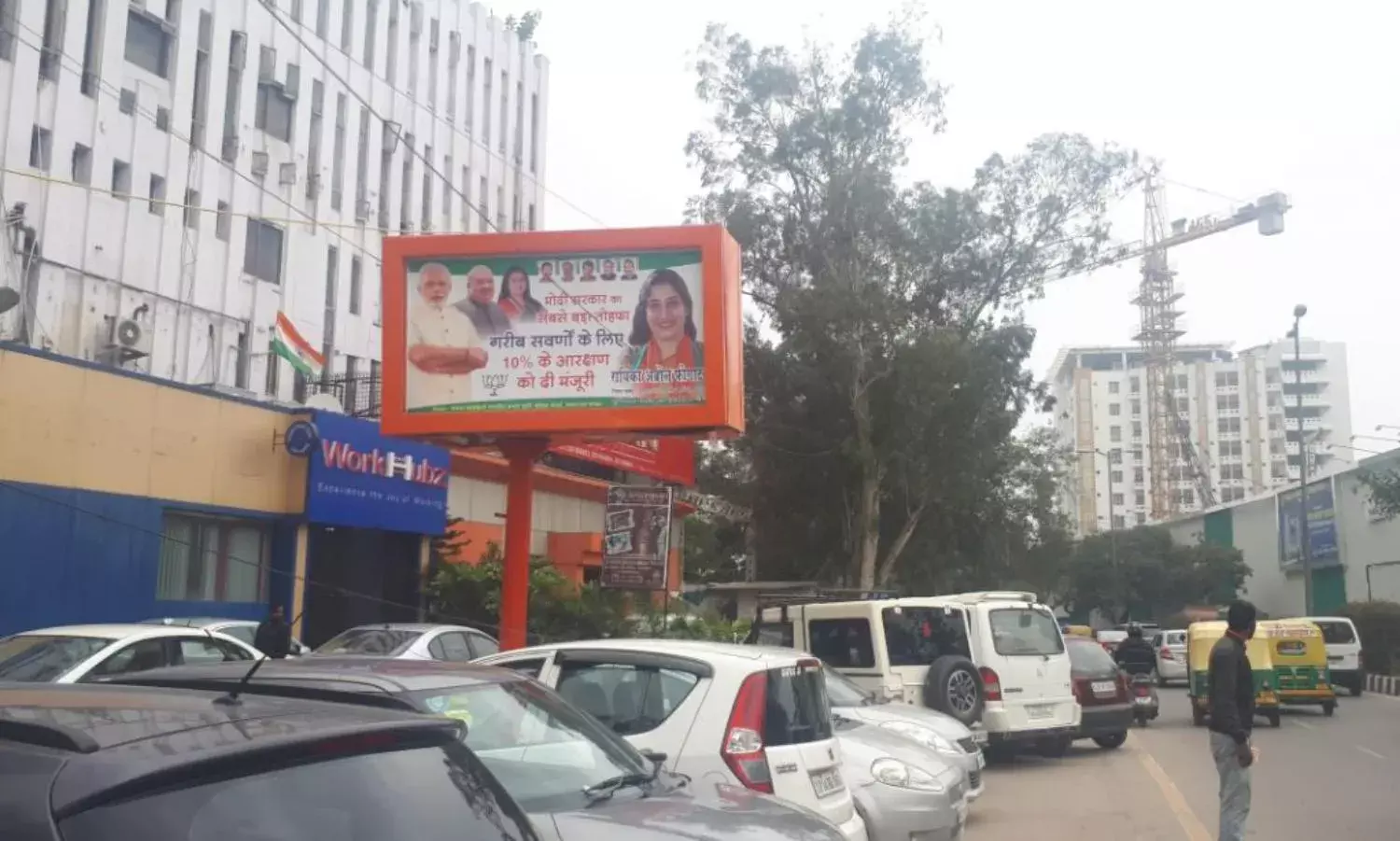BJP Workers Told to Say 'Savarn' Quota, While Leaders Plead 'Economically Weak'
'There is no way we can get rid of the word Savarn while campaigning'

NEW DELHI: The upper rung BJP leadership may have refrained from using the term upper caste, to describe its 10% reservation policy for those below a certain wealth threshold and not covered by the existing SC, ST or OBC quotas. But its cadres on the ground are under strict instruction to make sure the new quotas are pitched as reservations for Savarn or caste Hindus.
(Their opposites, the varnless or Avarns, are excluded from upward mobility within the caste hierarchy.)
Just months ahead of the Lok Sabha elections, Delhi has been flooded with posters and billboards of gratitude, with local representatives and partymen thanking Prime Minister Narendra Modi for finally making “Savarn” reservation a reality.
The local leaders who have put up the hoardings, banners and posters say they were advised by the party leadership to emphasise the term ‘Savarn reservation’ while raising the issue during polls.
One such member of the Delhi Municipal Corporation, who has installed one such billboard near Hauz Khas, told The Citizen that in a closed-door meeting between a senior BJP leader and workers on the ground direction was given to use the word Savarn in all ‘advertising material’ pertaining to the new quota.
In the English press the quota is typically described as reservation for the EWS, or economically weaker sections.
“We are using Savarn in all our posters, banners and pamphlets because we were asked to do so by our central leadership, including the Lok Sabha member from our constituencies. There is no way we can get rid of the word Savarn while campaigning. It’s a direction from the leadership,” the BJP corporator requesting anonymity told The Citizen.
The additional reservation proposal was cleared by the Union Cabinet early in January. In short order the Lok Sabha passed the requisite constitutional amendment with 323 ayes and 3 nays (the rest walked out or chose to be absent). Next day the Rajya Sabha too passed the bill, with 165 yeses and 7 nos.
Evidently, being critical of the new quota carries so high a risk that even parties believed to be winning election after election with the help of backward votes could not afford to take a chance and went ahead in supporting the move.
In the process, senior members of the government, the press and the BJP avoided using the term upper caste so much that it took a day or two for the public to realise that the new quota was meant only for people who are not STs, SCs or OBCs.
Not once did PM Modi or any of his ministers use the word upper caste while discussing the policy in English.
The Left parties opposed the move. Minister without Portfolio Arun Jaitely responded to their apprehensions by saying it must be the first time in history that a Communist party had opposed affirmative measures for the economically weak.
The so called general category - neither ST, SC or OBC - constitutes 31% of the Indian population, according to a recent survey by the NSSO. It comprises upper caste Hindus and the religious minorities, who are not afforded reservation in public institutions. Among Hindus this category is the wealthiest group by many estimates, including the periodic India Human Development Surveys.
With BJP leaders saying ‘economically weak’ and cadres saying ‘Savarn’, we can understand this gap in translation in the light of political semantics, or semantic politics, as a senior BJP leader explained to The Citizen.
“Some call it a masterstroke by us, some term it a surgical strike before elections. Isn’t it meant to be so?” he asked.
“You see, the central leadership of the party doesn’t want to upset the lower castes, OBCs by using the word Savarn. On the other hand we have advised local leaders to assert the word wherever necessary. The move was meant to consolidate our upper-caste vote bank, and like every other political party we are doing our bit to save our constituency from eroding away from us, given the economic failures that are affecting them too,” the senior BJP leader explained.
But for the party’s ad men, or the Hindu supremacist RSS behind them, the Hindi word savarn may carry an additional advantage. It can be thought to include the OBCs, many of whom were once shudras from the lowest varn stratum, but now form the dominant caste in their region or locality.
PM Modi’s own caste-claim is Ghanchi, who are an other backward caste in Gujarat.
The BJP has the largest upper-caste support base among large parties, and like them it is known to have served the interests of the Hindu upper castes in its political journey over the decades.
In recent years, however, even upper-caste Hindus have displayed anger against the party, leading new outfits like the Savarn Bachao Morcha (Save the Savarns Morcha) and similar small organisations.
It has been speculated that in the coming general election, upper-caste Hindus may not vote for the BJP in chunks, owing to what they call the RSS-BJP’s appeasement of the lower castes in order to build larger Hindu solidarity. And also because of the adverse impact, even on them, of policies like the GST and demonetisation.



